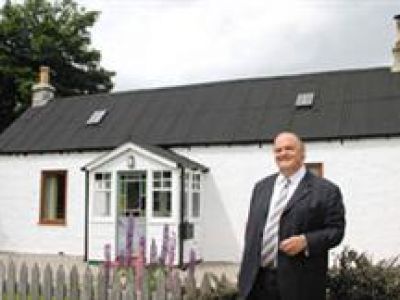Railway sleeper houses should be preserved before they are all destroyed, says Councillor
25 August 2013

Councillor calls for survey of Railway Sleeper Houses, so as to "preserve a dying breed".
Railway sleeper houses, which seem to be found more in the Highlands of Scotland (Badenoch and Strathspey) than anywhere else in Britain, were constructed using reclaimed railway sleepers as their main structure, often with a coating of wire and cement render.
Councillor David Fallows, wants a survey to count the number of such homes remaining in the area. He also believes that in the near future, several good examples of railway sleeper homes that have been earmarked for demolition to make way for new houses could be dismantled and rebuilt at the council-owned award-winning Highland Folk Museum in Newtonmore for the benefit of history.
Mr Fallows said: "Railway leeper homes seem to be a particular phenomenon of this area, as a result of the policy of the Highland railway and the early days of the London, Midland and Scottish Railway, that made railway sleepers available at little or no cost. They were, perhaps, the 'affordable housing' of the time warm, snug and easy to build. I'm no expert on these houses, but I am aware that they are a dwindling resource. It is inevitable that people will want to replace them with more modern buildings that are in step with modern needs and standards, and no-one would want to deny owners that right. But we are approaching the time when we need to try to establish just how many of these houses remain in the area in relatively good condition, and perhaps look to the possibilities of rescuing a good example and adding it to the growing and superb collection of historic buildings in the Highland Folk Museum, so that railway sleeper houses can take their place in the heritage of the area. They are unprepossessing, not in any way outstanding in their style or ambition, but important nonetheless."
Highland Folk Museum curator Bob Powell said that railway sleeper homes were a fine example of Highland vernacular architecture, and had an important place in the region's history. He said: "There are still a fair few railway sleeper houses in the area, and we hope to get more examples secured for the museum, but they are certainly under threat. There are already two examples of sleeper buildings in the folk park the 1930s Newtonmore Curling Clubhouse, and a bothy recently moved to the park from the Dalwhinnie area. There has even been a book published on the importance of railway sleeper buildings in the strath. 'Railway Sleeper Buildings', by Derek Kerr, was published in 1986 and studies examples in Badenoch and Strathspey.

